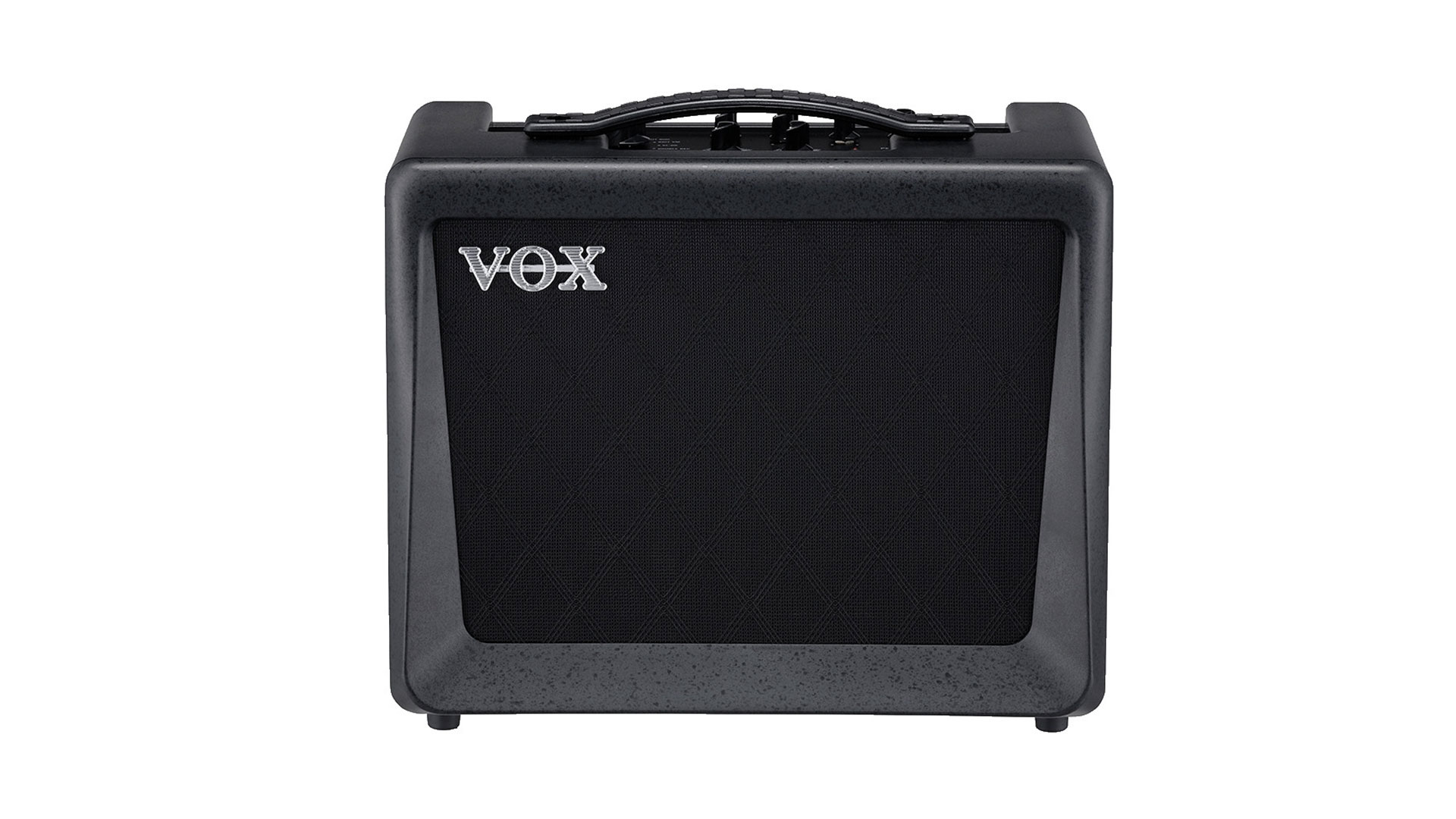Guitar World Verdict
The Vox VX15 GT does all the stuff you would expect, but by paying extra care to the internal structure of the amplifier itself, they’re aiming to create the ultimate portable, but giggable little amp.
Pros
- +
Ultra precise amp models
- +
Loud for the size
- +
Great delays
Cons
- -
No pre-gain effects
- -
Phaser and flanger are a bit fizzy
You can trust Guitar World
The market for lightweight, feature-laden modelling amps is pretty crowded at the moment, but amp companies seem to understand that they all need to do something a little different to distinguish themselves from everyone else. Otherwise, everything would just be “models of the same old amps, the same effects, an auxiliary input and a USB connector.”
The Vox VX15 GT does all the stuff you would expect, but by paying extra care to the internal structure of the amplifier itself, they’re aiming to create the ultimate portable, but giggable little amp.
Knock your Vox off
At the heart of the VX15 GT is proprietary VET (Virtual Element Technology), which models famous amps right down to the component level, replicating the bits and bobs of the original circuit itself. There are 11 amp models, with titles that give hints to their inspiration: Deluxe CL, Boutique CL, Boutique OD, AC30, AC30TB, Brit 1959, Brit 800, Brit VM, SL-0D, Double Rec and Line.
No, that last one isn’t a Line 6 model – it’s created to handle line-in signals from acoustic guitars, effects processors and other units that require a nice clean signal, meaning this could easily double as a PA, a synth amp or an electronic drum kit monitor in an emergency.
There are eight effect types, grouped into Modulation (chorus, flanger, org phase and twin trem) and Delay/Reverb (analog delay, tape echo, spring and hall) categories. Both types can be used simultaneously, so you don’t need to sacrifice your delay just to use a phaser, or your reverb when you want tremolo. A tap tempo button easily syncs your effect rate to the pace of your song.
To achieve optimum sound reproduction, Vox has gone for an ultra lightweight sealed body made of ABS with a bass-reflex design. This minimises extraneous vibration and projects more of your sound forward to your audience instead of dissipating some of the energy through cabinet rattles and the like, while the bass-reflex design gives you nice tight lows without forcing them out of the speaker itself.
The amp itself is only 15 watts, but it sounds a lot louder and will quite happily share the stage with a band in a small gig environment. There’s also a louder version, the VX50 GTV, which has a few more bells and whistles and greater editing capabilities but the same amp models and effects.On the practical side of things, there’s a tuner, an auxiliary input, a headphone/line-out jack with built-in cabinet simulator, a preset mode for recalling your vital settings, and a manual mode which makes the settings reflect the physical knob positions.
Add a VFS5 footswitch (sold separately), and you can change programs and expand your program memories to eight types. You can easily stomp through from your cleans to your crunches to your leads to your epic effects.
Super modeller
The amp tones are all warm and lifelike, with plenty of dynamic response and sweet harmonics. The clean and dirty-ish tones benefit from the clarity of separating out the low-end via the bass- reflex design, but the high gain tones really show off the rewards of this type of system.
Ultra distorted, low-tuned riffs sound punchy and defined, while solos sound three-dimensional. In some ways, the effect is almost like listening to your amp from the control room after a good engineer has applied some subtle but effective EQ to bring your sound up to broadcast standards.
Niggles? Personally, I’ve never been a fan of phaser placed after a preamp. It sounds fizzy and overbearing, whereas the classic EVH phaser sound comes from plugging a phaser into an overdriven amp. I wish the modulation effect section could be moved to before the preamp. But the delays and reverbs sound really great – far better than you might expect from such a small little amp. But then again, this is Vox, and they ain’t gonna mess around with that stuff.
The bottom line
Vox has already made plenty of great modelling devices, and they’re clearly not going to stop with this series. So why should you buy this one, instead of waiting a few years for whatever comes next? Well, the answer is simple: because this amp sounds great now, with plenty of sonic projection, a wealth of usably lifelike sounds, and enough flexibility to work in all sorts of situations from the stage to the teaching room.
Peter Hodgson is a journalist, an award-winning shredder, an instructional columnist, a guitar teacher, a guitar repair guy, a dad and an extremely amateur barista. He runs a blog, I Heart Guitar, which allows him to publicly geek out over his obsessions. Peter is from Melbourne, Australia, where he writes for various magazines, including Guitar World.
“If you’ve ever wondered what unobtanium looks like in amp form, this is it”: Played and revered by Stevie Ray Vaughan, Carlos Santana, and John Mayer, Dumble amps have an almost mythical reputation. But what's all the fuss really about?
“For the price, it’s pretty much unbeatable”: Harley Benton JAMster Guitar review











